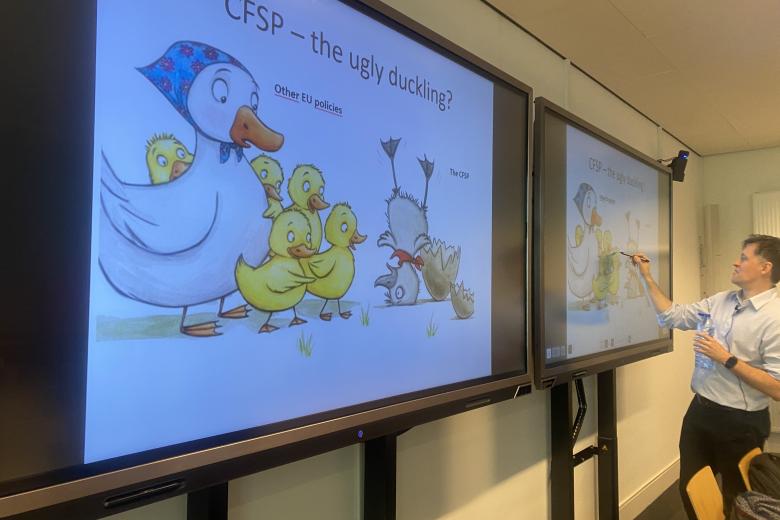Wandering around and getting lost in museums
“I’m naturally a doubter, but in my job search, I realised that I had been thinking secretly for a long time: ‘Working in a museum seems like it would be the most fun.’” Eva van Diggelen, Arts and Culture alum, has been working since 2015 as a curator at the Kunsthal in Rotterdam, where she curates very diverse exhibitions. That broad orientation was also in her study programme and has been a common thread throughout her life.
She partly developed a love for museums and art at home. During holidays in Italy, every other day was spent doing something involving art and culture; the other day was for relaxing. “I saw a lot of things and enjoyed wandering around all of those museums. I never lost that. I take Fiep, my daughter of three, regularly to exhibitions in the hope that she’ll also become a lover of museums.”
Municipality – Police – Museum
Her career path was not a straight line. “After graduating, I was able to start working at the Maastricht Municipality through my thesis supervisor, Joop de Jong. Of course, it was nice that I could get started right away, but I soon noticed that policy work wasn’t for me.” Then she found work at a project office in Maastricht. “Very nice, but it ended because of budget cuts. Last one in, first one out.”
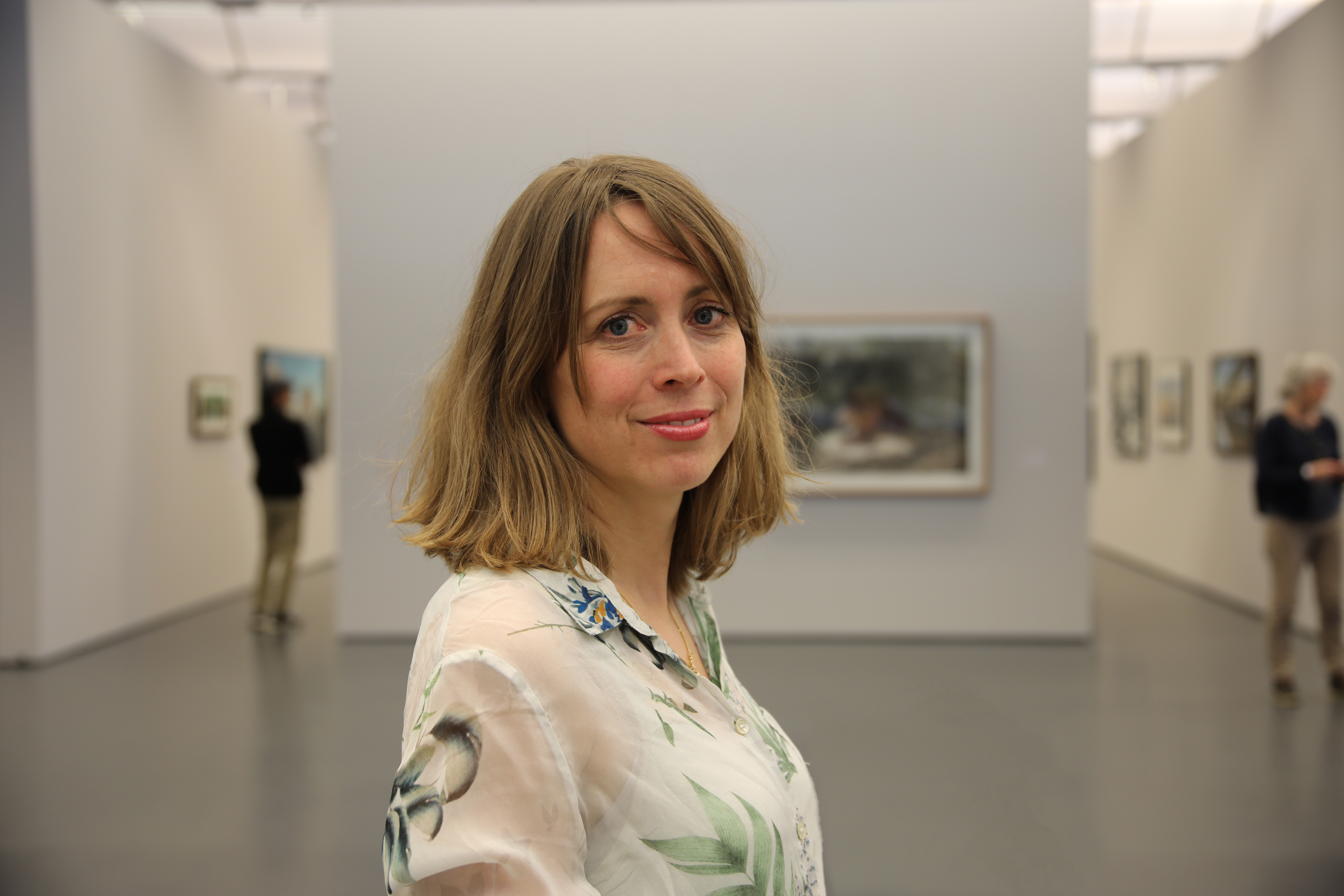
She moved to Utrecht and found a job with the police. “Again something completely different. Nevertheless, I had a great time there. I worked with a project group that had to implement a bulletproof and stitch-free vest throughout the organisation. It was a big task to get the needs of all those different departments and locations aligned. But it was successful, and much of my work experience there helps me in my current work, in which I often deal with many different parties. If you stay faithful to your goal, even when you’re currently doing something different, it’ll all work out. And I noticed that every work experience, no matter where it is, is valuable.”
Art for a wide audience
It feels like a privilege for her to work in the beautiful Kunsthal building, designed by Rem Koolhaas. “A building that you can easily get lost in as a visitor, but that's also the intention”, she says smiling. “In the Kunsthal, a number of exhibitions are always planned next to each other. Come for one, and before you know it you’ll be attending another.” In total, Van Diggelen and her two co-curators organise around 25 exhibitions a year.
Now, the Kunsthal is not a museum in the classic sense of the word. “We don’t have our own collection, so we always have do it with things from others. And we particularly want to create exhibitions for a wide audience.” This year, for example, she has curated exhibitions on hyperrealism in painting, the 75th anniversary of the Maastunnel, and for this coming summer ‘All you can art’, an international project about art education. “I’m doing this project with David Bade, a well-known Dutch artist, and Tirzo Martha from Curaçao. We’re organising a summer school for young people between 14 and 24 years old at the pre-vocational (VMBO) education level. These young people can’t go to an art academy, because those give professional training to people who have finished secondary school (HBO level). For the really talented youngsters, we try to bridge the gap.”
Storytelling
That broad orientation remains the common thread that runs throughout her life. That’s why, after finishing secondary school in 1998, she also chose the Arts and Culture programme in Maastricht instead of a programme in art history. “And I've never regretted that. The study combined so many things with each other: history, culture, philosophy, economics and science. How all these things were combined and that none of them actually stands alone, I found very interesting, also because art and culture were important components.”
She looks back on her student time in Maastricht very fondly. She was a member of the student association Saurus and lived in a cosy student house, where she also got to know her husband with whom she now has two daughters. In practice, she found the PBL education difficult. “A lot of activity was expected, and I didn’t always meet those expectations. Being individually responsible for the preparation of a question and the learning objectives that need to be answered, I think is very valuable now. In my work, I still more or less use this way of working. Here, too, it’s about questions like: ‘What story do you want to tell in an exhibition?’. There are subthemes underlying this, and what you want to do with these in order to shine a spotlight on the higher goal of the exhibition.”
Going deeper
On the question of what her career will look like ten years, she replies, “The next step I think would be to go to a museum with its own collection. I think the many subjects here are great for now, but I can imagine that over a number of years I would like more space for advanced research. But in the next ten years I won’t be finished here.”
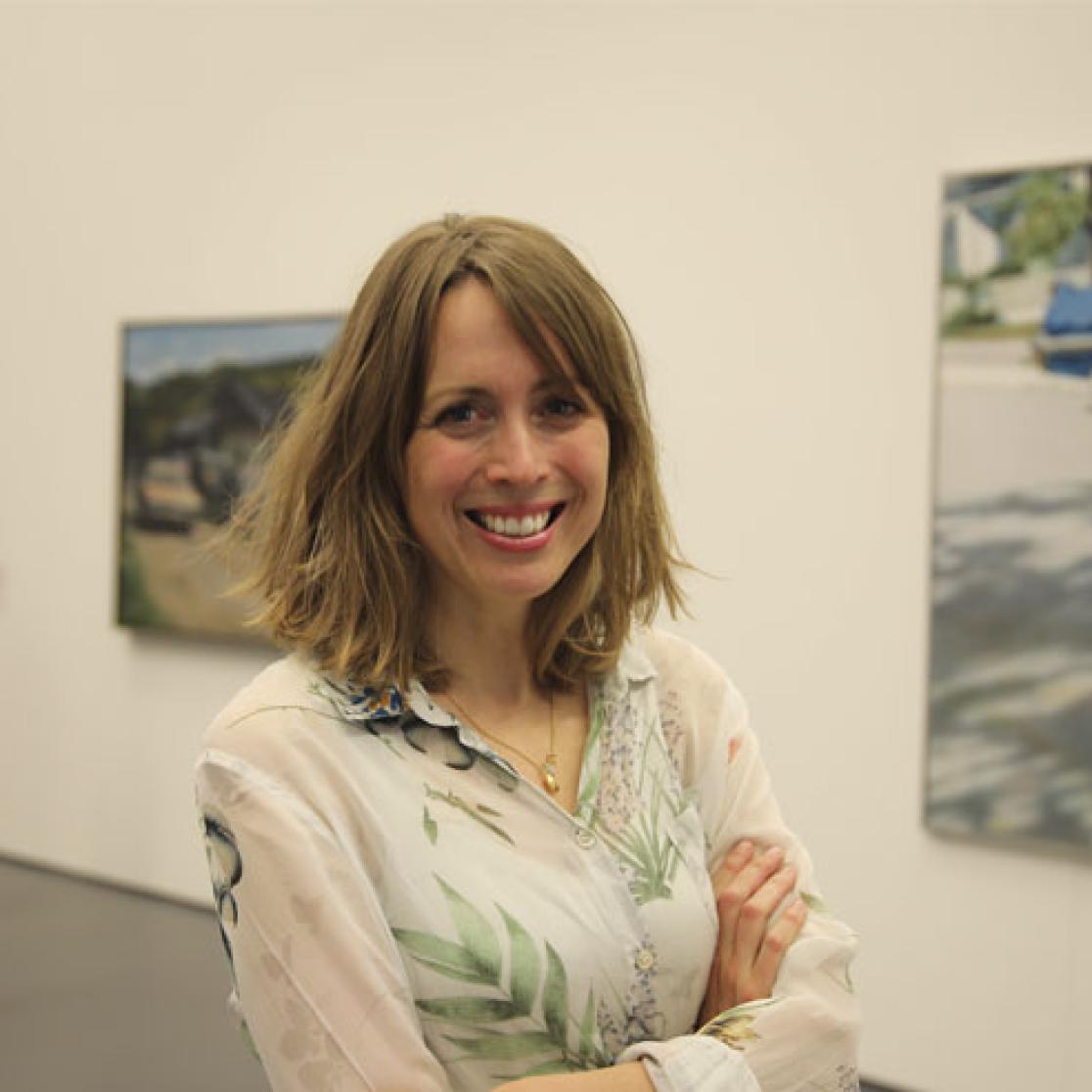
Also read
-
DigiMach places Meuse-Rhine Euroregion at the heart of industrial digitalisation
DigiMach (Digital Machining) is a new cross-border project uniting Belgium, Germany, and the Netherlands around a common goal: accelerating the digitalisation of the machining industry in the Meuse-Rhine Euroregion.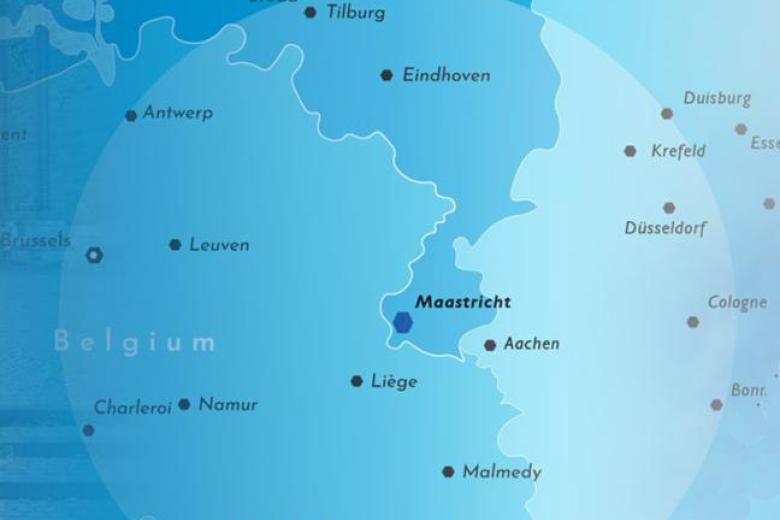
-
Globalisation & Law Network seminar with Áine Ryall
On 24 November 2025, the Globalisation & Law Network, together with the Institute for Globalisation and International Regulation (IGIR) held the seminar with Professor Áine Ryall.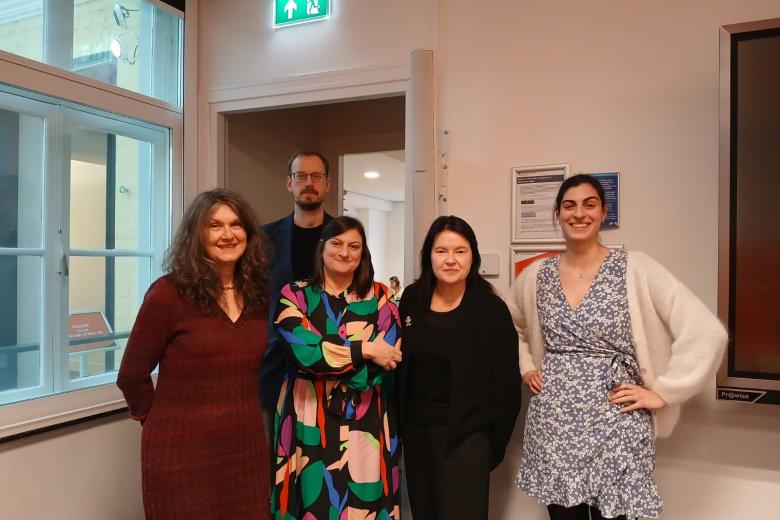
-
Guest Lecture: Lóránt Havas explores current challenges in the EU’s CFSP
Lóránt Havas delivered a guest lecture on the EU’s evolving CFSP, discussing key legal developments, institutional challenges, and new defence instruments.